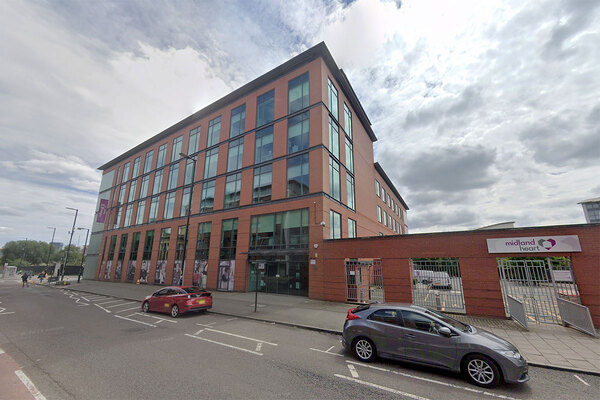You are viewing 1 of your 1 free articles
How social landlords are responding to ‘county lines’ drugs gangs
Gangs of drug dealers are leaving inner cities to set up shop in the countryside in ever-greater numbers, with vulnerable social tenants among their victims. Steve Sampson finds out how landlords are responding. Illustration by Michelle Thompson
“They’ll ask, ‘Do you do food [heroin]?’ If you say yes, they’ll make you an offer,” says Julie*, explaining how her ex-partner invited two London drug dealers to move into their home just outside Swindon.
“The unwritten rule of the streets is that you should get between £60 to £80-worth of crack and heroin a day for letting them operate from your home,” she says.
Sporting gold jewellery, piercings and a shock of blonde hair, Julie is a survivor of relationships dogged by violence and substance abuse.
She is also a victim of ‘cuckooing’, one of the tools employed by inner-city gangs operating provincial drug-dealing networks.
Gangs recruit local teenagers to transport drugs, weapons and money, and they co-opt, or cuckoo, residential homes of former drug addicts
Over the past year, the spotlight has turned on the so-called ‘county lines’ phenomenon – and on the tactic of cuckooing.
It is the co-ordinated means by which dealers from large cites use dedicated phone lines to supply Class A drugs – primarily heroin and crack cocaine – to customers in smaller towns. The model sees the remotely operated ‘county line’ become a recognised brand, while smaller local dealers are muscled out.
Gangs recruit local teenagers to transport drugs, weapons and money, and they co-opt, or cuckoo, residential homes of former drug addicts – like Julie – or the elderly and infirm to sell their wares in what are known as ‘trap houses’.
In September, the National Crime Agency (NCA) said that the number of these networks criss-crossing the UK had doubled to more than 1,500 in the past year. No part of the country is immune: 88% of the UK’s policing areas reported county lines activity, while 77% reported cuckooing.
In response, the NCA has launched the country’s first county lines co-ordination unit, based in Birmingham, promising to develop a “multi-agency approach”.
Given this – and the fact that large numbers of victims of cuckooing are likely to be vulnerable tenants – what are social landlords doing to tackle the problem?
London-based Hyde Group is taking a two-pronged approach to the threat posed by the county lines networks, focusing on both the young people who are drawn into the gangs as couriers and the vulnerable tenants who end up as unwitting trap house hosts.
Oliur Rahman is co-founder of Active Communities Network, one of many grassroots organisations that deliver youth engagement programmes on behalf of the group’s charitable arm, the Hyde Foundation.
Mr Rahman, who grew up on a south London estate, oversees youth projects in London, Manchester, Belfast and Hertfordshire.
London-based Hyde Group is taking a two-pronged approach to the threat posed by the county lines network
For him, county lines highlights the devastation wrought on youth services by the government’s austerity drive. The phenomenon also shows the important role social landlords can play.
In the absence of state-funded youth workers, he says, no one is closer to their communities than housing associations nor better placed to identify individuals in need.
Sarah* is one of those individuals. Wearing high street fashion and a broad smile, there is no hint of her brush with organised crime.
She started couriering drugs from south-east London when she was 17 and unemployed. The gang that recruited her paid her £150 a day – a salary she describes as “easy money”.
“They pitched it as being paid for having a day out in the countryside, what’s not to like?” she adds with a nervous giggle.
“I knew it was illegal,” she says, “but it seemed like a game, it was exciting. It was cops and robbers.”
But when she wanted out after a run-in with the police, things turned nasty. “I had a relationship with one of them, they had videos of me [and] they knew my family, there was a lot of pressure to continue working for them.
“If it wasn’t for my youth worker I don’t [know] where I’d be. He got me back into college.”
Five years on, Sarah is all too aware why the gang adopted her: “I was young, impressionable and had access to my mother’s car. I wasn’t on the radar of the police, I was the perfect cover.”
Mr Rahman says county lines has exposed the diversity of need in communities, from young people like Sarah who require light-touch support, to those who have become more deeply embedded in gang activity.
“There are two key lessons from county lines: one, that it is driven by economic need and two, many of the young people that appear to be perpetrators in this type of exploitation are likely victims of trauma themselves… They see life through a different lens. What we see as exploitation, they may see as their ‘normal’. What we have to ask ourselves is: ‘How can we reach that person? How can we engage with them?’” he says.
Using sport as a hook to engage young people in year-long, peer-led programmes, the organisation seeks to help them re-enter education, teach them new skills or find them work.
"Many of the young people that appear to be perpetrators in this type of exploitation are likely victims of trauma themselves," Oliur Rahman
“This is about breaking cycles of abuse,” elaborates Mr Rahman. “There is no quick fix.”
But while the Hyde Foundation is focusing on empowering vulnerable young people, the focus for Hyde as a landlord has been on older people, single mums and drug users identified by the NCA as likely targets of drug networks seeking to hijack premises from which to operate.
“County lines has been a real learning curve,” says Nic Haig, anti-social behaviour service manager at Hyde, who has led the landlord’s specialist anti-social behaviour (ASB) team since its launch in 2017.
“We know the gangs we have in our London boroughs, their names, their tags, who they’ve fallen out with, but county lines is completely different. It’s more hidden.”
In a bid to tackle the issue head-on, Hyde has rewired the way it works, bringing partnership and intelligence-sharing to the fore. At the heart of Hyde’s response is its ASB database that records the details and locations of incidents, and is being developed to forecast trends to identify where best to deploy resources.
ASB teams in West Sussex and Kent that historically had no reason to discuss gang crime with their peers in Lambeth and Stockwell today share intelligence and best practice.
Alliances with the Metropolitan Police and forces in Kent and West Sussex, mean that law enforcers are aware of all stock owned by Hyde.
Meanwhile, Hyde is starting to raise awareness of the issue with its contractors, such as gas check teams, to identify potential cuckooing cases.
Hyde says that all its contractors now receive an ASB guide to follow, which helps them look for warning signs. Lessons learned from contractors will be shared with frontline staff. The rationale is that residents are less concerned by what a tradesperson might see or hear than a visiting housing officer, and are likely to be less guarded.
So what are the red flags that a tenancy has been hijacked?
A drop-off in calls for maintenance work, the failure to respond to letters or missed rent payments could all be warning signs, says Gemma Goacher, regional head of south-west London at St Mungo’s, who has specialised in tenancy sustainment.
The charity works across 16 London boroughs, offering floating support to vulnerable tenants who have a history of homelessness.
“What you’re looking for is signs that your tenant has lost control over the premises,” Ms Goacher explains.
With an ‘all-eyes’ approach, visits can reveal that a tenant is no longer the key holder, she explains, or that they have started sleeping on the couch, or new ‘friends’ appear to have moved in on a permanent basis.
“What you’re looking for is signs that your tenant has lost control over the premises,” Gemma Goacher, St Mungo’s
Early intervention is the key, says Ms Goacher, and that starts from the moment a property is allocated.
“Where you have a vulnerable tenant moving into a new area, you have to support them in making the right connections – that’s with medical services, education and job opportunities. But it’s also about working with partners and local authorities to make sure they can furnish their property; put carpets on the floor and curtains in the window, otherwise they can easily become targets,” she says.
Back in Swindon, Julie, a tenant of Sovereign Housing Association, is an example of how hard it can be for landlords to achieve Ms Haig’s goal of keeping residents safe. Julie is now waiting for a new home so she can make a fresh start.
“Once you’ve been cuckooed by a gang you understand how they operate,” she says. “You see them everywhere in Swindon, working the benches that line the town’s shopping precincts, the bus station and pubs.
“I’m known in the area now by gangs and users, that’s why I have to move. I can’t answer the doorbell any more for fear of who it might be.”
Richard Lane, a former police support officer and now ASB officer at Sovereign, admits the advent of county lines has come as a shock to the community. “Cuckooing has come from nowhere in the past two years,” he says. “We used to get a couple a year perhaps, but now we’re handling 10 or more. It could be on any estate; they way they operate, you do not know they are there. Our big concern at the moment is the way they tap into networks of ex-addicts.”
Partnership is also key to Sovereign’s approach. “As a landlord, we can’t go to court ourselves, only the police or a local authority can bring a closure order or partial closure order under the Anti-social Behaviour, Crime and Policing Act 2014,” Mr Lane explains. “It takes time and evidence to arrange visits and raids, and to build a rapport with each force.”
A partial closure order is Sovereign’s favoured response. Under this, only those named on the tenancy agreement can enter the flat for three months. Anyone else going into the property is arrested, with arrivals and departures monitored by the police.
This also allows Sovereign to protect vulnerable people, adds Mr Lane, engaging with them rather than making them homeless, which is a last resort.
But closure orders are not the only tool Sovereign has to hand. This year the social landlord added being a “victim of modern slavery” to the list of reasons why people can be moved quickly to another property. And it has taken the first steps towards a community-based response.
In the case of a partial closure, signs are stuck on communal doors and on the door of the property so that the community is aware the property is being monitored.
“Often people are scared to come so it is good for residents to know that action will be backed up with an arrest. We want them to be confident enough to come forward and play a role in safeguarding their own estates. It is a project in its very early stages, but we’re hoping we can win their support,” says Mr Lane.
But Julie’s case shows the scale of the task facing landlords. “They just took over,” she says, describing what happened after the promise of free drugs evaporated and gang members came to live in her house.
“I hid in my bedroom much of the time. I wanted it to stop but I didn’t want to be arrested or lose my home. I didn’t know where to turn.”
*Names have been changed















